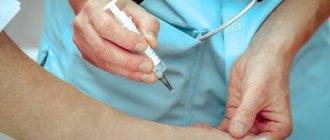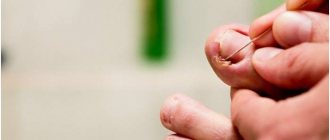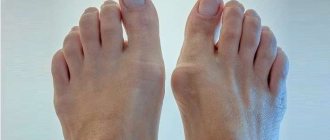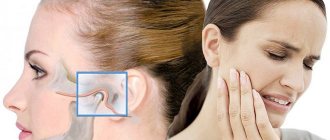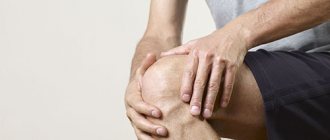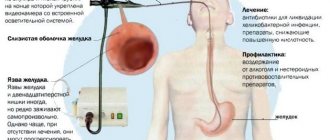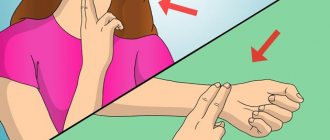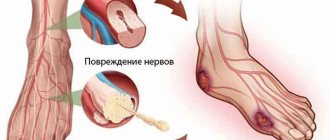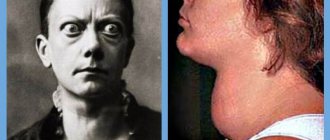Very often, women are faced with such a problem as a bunion on the big toe. It can occur due to improperly selected shoes, injuries and many other reasons. This causes significant discomfort in everyday life. You need to understand that a bunion is not just a defect, it is a pathology. Before you try to get rid of it, you need to consult a specialist, he will tell you how to treat it correctly.
There are several ways to get rid of bunions on your toes, which you will learn by reading our article. We advise you to be more careful when choosing shoes, do physical exercise and balance your diet.
Causes of bunions on the foot
There are several reasons for the appearance of bunions on the feet:
- overweight;
- incorrectly selected shoes - tight, with a narrowed toe, high heels, unstable lasts;
- heredity;
- leg injury;
- flat feet;
- hormonal changes;
- infectious diseases;
- elderly age;
- menopausal syndrome;
- diabetes;
- a profession that involves standing for long periods of time.
What are tophi?
Tophi are formed due to excess uric acid in the joints. Uric acid salts are small crystals of varying sizes.
In some cases, the tophi opens up independently, releasing a white mass. Growths on the leg occur due to the following reasons:
- Having excess body weight;
- Diseases of the endocrine system;
- Deficiency of certain vitamins;
- Excessive stress on the legs.
The first signs and symptoms of bunions
Doctors distinguish several stages of bunions on the forefoot, which serve as symptoms of the disease:
- first stage - protrusion angle no more than 20°; you see redness and thickening of the skin in the area of 2-5 fingers, but apart from evening leg fatigue, nothing bothers you;
- second stage - curvature up to 30°; when walking you feel pain in your foot, ankle and lower leg; the bone is clearly sticking out;
- third stage - deformation of the thumb of 50°; even a slight load on the foot causes severe pain; you change your shoes to soft slippers;
- fourth stage - the angle of curvature is above 50°; you feel pain both in movement and at rest; sore joints ache; legs swell; the phalanges of the second and middle fingers are deformed along with the thumb.
General characteristics of the disease
A bunion on the big toe, or callus, is a foot deformity that is not just a cosmetic defect. This is a serious disorder, an orthopedic disease, in which the phalanx of the big toe gradually moves in relation to the metatarsal bone.
Callus provokes changes in the joint of the thumb, causing inflammation and severe pain.
To explain the mechanism of development of deformity, one should turn to anatomical data. The foot has two arches - longitudinal and transverse. The function of these structures is to maintain balance and cushion when walking. In the transverse arch are the heads of the metatarsal bones, which form an arch.
Do you think that joint diseases can be cured without visiting a doctor?
Not really
If the head of the first metatarsal bone, under the influence of negative factors, tends to the inner side against the background of simultaneous deviation of the phalanges of the first toe outward, then this becomes an impetus for pathological disorders of the structures. The fact is that as a result of such changes, the load on the foot changes. Now more pressure is placed on the middle metatarsals. The latter, in turn, bend and fall, remaining in the wrong anatomical position.
The pathological process progresses as an inflammatory process occurs in the periarticular bursa. This causes pain and swelling. The head of the metatarsal bone constantly experiences friction from the shoe, so the structure is injured to an even greater extent. Subsequently, the head of the bone is covered with bone tissue, and the foot undergoes structural changes.
Externally, the changes look like this: initially, a not too large compaction forms in the area of the metatarsal joint, which over time increases in size and causes pain. The foot gradually becomes deformed, becomes wide, and takes on an unnatural appearance.
Most often, a lump on the big toe of the lower extremity occurs in older people aged 65 years and older. However, it can often be seen on the toes of young girls, which is associated with wearing fashionable, but very tight shoes with high and unstable heels.
How to treat a bunion on your foot
The first thing to remember is do not self-diagnose or self-medicate. Be sure to consult a doctor. Only a specialist can determine exactly why the big toe bone hurts, what to apply and what additional products to use.
Timeliness is equally important. Hallux valgus develops very quickly. If you delay visiting a doctor, you will not only give up regular shoes, but also develop chronic health problems - bunions on your feet provoke pathologies of the spine, knee and hip joints.
Treatment of deformity begins with determining the stage of growth of the bone in the leg - how to treat depends on how advanced the disease is:
- At the first and second stages of development of a hallux valgus, treatment includes ointments, creams, gels, compresses, massage, lotions, screeds, splints, bandages, therapeutic exercises and physiotherapy.
- At the third stage, if the adjacent phalanges are deformed, surgical manipulations may be prescribed - recommendations on how to remove the bone on the middle toe, how to treat inflammation, will be strictly individual.
- At the fourth stage of growth of the bones in the legs, drug treatment will no longer help and orthopedic surgery will be required.
In addition to the main treatment, you need to take care of the condition of your feet yourself - wear special shoes, do self-massage and adjust your diet if the cause of the deformation is excess weight.
How to remove hallux valgus?
Dealing with this problem is not easy either in a clinical setting or at home. But if treatment began on time, then getting rid of it will be much easier than at the last stage of the disease. So, first of all, doctors always talk about an integrated approach. That is, you should not choose one treatment option and follow only it. It is best to apply several methods in parallel - then success awaits in 90 percent of cases. Let's look at how hallux valgus is treated under the supervision of a doctor and at home.
Features of the treatment of hallux valgus deformity
Orthopedic surgeries
What kind of surgery is indicated for bunions depends on the degree of foot deformity. If the deformity is mild, you will have a bunionectomy - the protruding parts of the bone will be cut off and the muscles, ligaments, and tendons will be realigned. Moderate to severe deformities require an osteotomy to restore the proper position of the metatarsal bone. After both operations, you will be able to walk the next day. You just have to wear special shoes and not overload your feet.
Surgeons perform several types of osteotomies - chevron, wedge metatarsal osteotomy and SCARF or Scharf osteotomy of the first metatarsal.
Chevron operation
In a chevron osteotomy, the base of the head of the first metatarsal bone is sawed in a V shape and the bone is adjusted in the desired direction and distance. Then the fragments are fixed with screws, and unnecessary parts and excess capsular tissue of the joint are removed.
Metatarsal osteotomy
With a metatarsal osteotomy, cones on the legs are removed using a wedge resection method - the base of the metatarsal bone is isolated and a small triangular piece is cut out, the apex of which is directed inward. The edges of the bone are then aligned and secured with a titanium plate and screws. Bone growth - exostosis is excised.
Scharf osteotomy
Scarf osteotomy or Scarf osteotomy is similar to chevron surgery. Here also a bone cut is made and the bone parts are connected in the correct direction. However, in this case the dissection is Z-shaped. After separating the beginning of the bone from the base, it is moved to the articular surface of the phalanx of the finger, connected, fixed with sutures and screws, and the middle tissue is removed.
Traditional methods of treatment
To treat a bunion with folk remedies, you can use the following mixtures:
- One raw chicken yolk and ½ teaspoon regular salt. The mixture is whipped until foam forms, applied to a piece of gauze and applied to the bone overnight. This composition can be used regularly.
- Iodine, ammonia and castor oil in a 1:1 ratio. The mixture is used as an effective pain reliever; these substances have virtually no effect on bone reduction. This composition should be applied at night.
- Iodine and vinegar. A mixture is prepared from 5 drops of iodine and a teaspoon of vinegar, applied to the entire forefoot.
- Dry mustard, bodyagi and machine oil, which are taken a tablespoon each and mixed with two tablespoons of turpentine. This mixture is applied daily (to improve the results, it is recommended to take madder tincture during this period).
- Iodine with aspirin and lemon. 5 aspirin tablets crushed into powder are poured into a bottle of iodine (10 ml) and mixed. You can add freshly squeezed lemon juice to the mixture. You need to apply the mixture to the bone before going to bed, and put on a warm sock on top. In the morning, the treated area is washed with warm water and soap. The mixture with lemon is applied for 3 days in a row, and then a break is taken for a week.
- Eggs, vinegar, turpentine and rendered lard. An egg with a white shell is placed in a jar, filled with vinegar and placed in a dark place for 2 weeks. Then the egg shell is removed from the jar, and 10 grams of pharmaceutical turpentine and one tablespoon of rendered lard are added to the resulting liquid (lard can be replaced with Vaseline, butter or other animal fat). The mixture is applied every other day; it is useful to alternate it with an iodine mesh.
- Ammonia and ethyl alcohol, camphor, bodyaga and red hot pepper. To prepare a mixture of ammonia, camphor and pepper, you need to take 30 grams each, and bodyagi - 10 grams, and pour all these components into 125 grams of ethyl alcohol. The mixture turns out to be very hot, so only the bump on the leg itself is smeared with it before going to bed (kept until the morning). The foot in the treated area should be wrapped in a bandage, and a sock should be put on top.
- Honey, melted in a water bath. Apply without adding additional ingredients.
- Honey mixed with pharmaceutical magnesium sulfate (1 tablespoon each) and a teaspoon of iodine. The mixture is applied for 3-4 hours a day.
- Honey, flour and propolis in equal proportions. Apply to the affected areas for several hours.
- Shark oil and bay leaf (such components are contained in the ready-made cream Shishka Stop).
- Vaseline, water and iodized salt. Apply at night.
- Sea salt, mustard powder and honey. The ingredients are taken in equal quantities. The affected area is treated daily with a thoroughly mixed mixture and the foot is wrapped in cling film for 12 hours. Treatment lasts a month.
When iodine is added to an aspirin solution, the iodine loses its color.
At home, you can try to get rid of a bunion on your big toe using original remedies that are used as ointments. Such means include:
- Toothpaste “Pomorin”, which is used to lubricate well-steamed bumps on the legs.
- Morning (“hungry”) saliva, which is rubbed into a bulging bump on the foot.
- Natural animal bile (chicken, cow, pig), which is used to lubricate the area of the thumb deformity 2-3 times a day.
You don’t have to look for animal bile at the market—you can buy medical bile at a pharmacy.
Compresses
In folk medicine, compresses are actively used to treat injuries and diseases of the musculoskeletal system, eliminating inflammation, pain and discomfort, as well as reducing swelling. You can also treat the bunion near your big toe with compresses at home. For compresses the following are used:
- Dry bay leaves (5 pieces) crushed in a coffee grinder, poured into a jar and filled with ammonia. The mixture is infused for 2 weeks. Gauze soaked in infusion is applied to the bone overnight and tied with a bandage.
- Crushed dried dandelion flowers in the amount of 100 grams, which are filled with 1 bottle of iodine. The product is infused for 4 days in a dark place. The finished tincture is applied in the form of a net to pre-steamed legs.
- Burdock leaves, smeared with pharmaceutical turpentine. For a compress, you need to choose large leaves that can be wrapped around the foot. The top of the sheet is wrapped with a thin plastic film and a warm cloth. This compress is used for 3 months.
- 100 grams of crushed garlic, which is mixed with 100 grams of horse chestnut seeds and wood (methyl) alcohol. For one compress, take half of the resulting mixture, soak a napkin with it and place the napkin on the bone for 20 minutes. The procedure is carried out within 15 days.
- Prunes boiled in milk. The dried fruit is opened and applied hot with the inside to the protruding cone. The cooled fruit is replaced with a hot one; in general, the procedure takes 30 minutes.
- Propolis, which is flattened, is applied to the deformed part of the foot for 15 minutes.
Folk remedies used in the treatment of bunions include:
- Kalanchoe leaves. Large leaves of the plant are placed in the refrigerator overnight, then scalded with boiling water and beaten for better release of juice. The leaf treated in this way is applied to the cone and secured with a bandage, held until it dries. This compress is used for 2 weeks.
- Walnut leaves, which are filled with iodine-vodka solution (one drop of iodine is needed for 50 grams of vodka). This remedy must be infused for 24 hours, after which the liquid is drained, and the leaves are placed in gauze and applied 2 hours before bedtime to the bump on the foot. The leaves are fixed with a bandage, the compress is removed before going to bed. You can use nut leaves for 2 weeks, then take a break for a week.
- Flaxseed (2 tbsp), which is ground in a blender and mixed with melted beeswax (3 tbsp) until smooth. The mixture is applied for 2 hours a day.
- Dried lilac flowers, which are infused in cold water, tightly sealed, for 10 days (in a ratio of 1:10). The infusion is used to wipe the deformed part of the foot.
- Sorrel. The sheets are ground into a paste and applied to the cone for a couple of hours.
- Elderberry, the flowers of which are compacted into a half-liter jar and filled with vodka. You need to insist for 3 weeks, and the jar needs to be shaken daily. The bone is lubricated with infusion 4-6 times a day.
In the spring-summer period, the deformed area can be wrapped daily or every other day with washed coltsfoot leaves. The leaves are fixed with cling film, the feet are wrapped in a warm cloth.
To make the bunion on the big toe disappear, folk treatment also suggests using:
- Dead apple. The damaged part is cut off and applied to the cones for 2-3 hours.
- Blue bow. The vegetable is finely chopped, placed on gauze and applied to the bump daily for 6-10 hours. After the compress is removed, an iodine mesh is applied to the bump. Treatment lasts a month.
- Rice water (rice is cooked without salt), in which gauze is soaked. Apply like a regular compress.
Important: Iodine, which is included in many recipes, is often recommended to be applied as a mesh, but the skin in the area of deformation is usually thin and inflamed, so iodine in its pure form can cause a burn. To apply an iodine mesh to a bunion, it is recommended to first steam the foot in a medicinal bath, then apply camphor oil, which protects the skin from burns, and only then paint the mesh with iodine.
Unusual compresses
To treat a lump on the foot near the big toe with folk remedies, you can use not only plants, but also products of animal origin for compresses. If a bone in your foot hurts, use folk remedies such as:
- Freshly caught river fish. For treatment, one compress is not enough, so cut up carcasses need to be frozen and thawed one per day. The fish carcass is applied to the affected area on both sides (encircling the deformed area in a semi-ring) and secured with a bandage. The leg is wrapped in polyethylene and a warm cloth over the bandage and left overnight. This treatment method can be used until complete recovery.
- An egg infused in wine vinegar until the shell dissolves (you need to infuse in a dark place). The egg is removed from the solution, the film is pierced, the yolk is separated from the white and mixed with vinegar and pharmaceutical turpentine (100 g) until smooth. The resulting mixture is placed in a cool and dark place. Then, to prepare a compress, take ½ liter of hot water and dissolve 250 grams of salt in it. The bone is wiped with a saline solution, after which an egg mixture and parchment paper are applied to it. Next, the foot is wrapped in woolen cloth. The compress is applied before bed and removed only in the morning; the procedure is carried out for 2 weeks.
To prepare the mixture, the egg in the vinegar solution must become transparent.
For a compress when treating a bump on the leg, the following is also used:
- Tar. 250 gr. 50 grams of tar are poured. alcohol and leave for 24 hours in a dark and cool place. The mixture is applied to a cotton swab and applied to the deformed part of the foot overnight. The tampon is fixed with a bandage and covered with plastic film on top. The treatment lasts 2 weeks, then a break is taken for a week and the procedure can be performed again.
- Red clay. Clay in the amount of 50 g. mixed with 15 gr. sea salt, pour a glass of boiled water and mix with 5 drops of turpentine. The thoroughly mixed mixture is applied to the pine cone and left until it hardens. The clay is washed off with warm water. Red clay can also be diluted with a decoction of chamomile, comfrey and calendula to the consistency of sour cream and applied to the bone for 2 hours every day.
- Blue clay. For the mixture you need 4 tbsp. l. clay and pre-prepared hot nettle decoction. The mixture is kept in a steam bath for 10 - 15 minutes and applied to gauze folded in several layers, which should be wrapped around the entire foot. Apply a film over the gauze and keep the compress for 20 minutes. Apply 3 to 5 times a week. Blue clay can also be poured with a decoction of oak bark (3 liters of boiling water per 100 grams of bark), but this mixture does not need to be applied to the feet; it is used as a foot bath (keep until the mixture cools). Used several times a month.
- Mumiyo. 20 gr. Shilajit powder is mixed with 2 teaspoons of animal fat (rendered lard, badger fat, etc.) and 1 teaspoon of cinquefoil alcohol tincture. The compress is applied for 5 hours.
After drying, the clay compress is washed off with warm water.
If there is a lump on the feet near the big toe, treatment with folk remedies can be quite exotic. Includes use:
- earthworms, which are collected and wrapped with a cloth to the bone overnight, putting a warm sock over the compress;
- earthworms, which are closed in a jar for several days, after which the resulting mucus is applied to the affected area like a regular ointment.
Baths and infusions for oral use
To remove a bump on the foot near the big toe at home, it is recommended to do medicinal foot baths. For this you can use:
- Salt and iodine. Add 2 tbsp to a liter of warm water. salt and 10 drops of iodine, and immerse the feet for 15 minutes. Regular use of an iodine-salt solution relieves pain and helps to reduce the size of the bone. After 2 weeks of treatment, a short break is needed.
- A decoction of a small amount of potato peelings (about 200 g). The peelings are boiled for 15 minutes, the broth is poured into a basin and slightly diluted with water until warm, after which the feet are immersed in the basin until the broth cools. You can do this bath for no more than 10 days.
- Pine needles (dried or fresh). For 2 tbsp. You will need 200 grams of pine needles. boiling water The broth should be boiled for 15 minutes, then it is diluted with water until warm.
- Salt, chamomile and elderberry. The feet are steamed in hot water (a pack of salt is placed on a bucket of water), after which bags of chamomile and elderberry flowers, previously soaked in warm water and well wrung out, are applied to the bones. Dry chamomile and elderberry are taken in equal proportions. The feet are bandaged for fixation.
Removal of bunions at home also helps with the following remedies that should be taken orally:
- Infusion of lingonberry leaves (for 1 tablespoon of lingonberry leaves you need 200 ml of hot water). The leaves are infused in a thermos overnight.
- An infusion of sedge that effectively eliminates pain in the area of deformity. At 2 tbsp. l. dry sedge take 200 ml of boiling water, infuse until warm and drink ¼ glass three times a day for a long period.
- A decoction of madder that helps remove excess uric acid. For 1 tsp. madder root take 1 glass of hot water and boil the decoction for 10 minutes in a water bath. Take 1/2 cup twice a day when cooled.
- Celery root infusion. 2 tbsp. grated root, pour 200 ml of cold water and leave for 3 hours. Take 1/3 cup before meals three times a day.
- Infusion of lemon balm, St. John's wort, linden and elderberry (2 tbsp each). 1 tbsp. The herbal mixture is brewed with a glass of boiling water, infused until warm and drunk before meals twice a day.
- A mixture of cranberries and onions. 0.5 kg of fresh or frozen cranberries is passed through a meat grinder along with 200 g. Luke. The mixture is placed in a dark place for a day, then 1 kg of honey is added to it. The mixture is stored in the refrigerator, taken 20 minutes before meals, 1 tsp. three times a day.
Drink lingonberry leaf infusion three times a day instead of tea.
To get rid of a bunion at home, you also need to eat right. In addition to eliminating harmful foods from the diet, when treating this pathology, it is recommended to eat rice prepared according to a special recipe once a week.
Dark rice is soaked overnight, boiled in the morning without oil or salt and eaten throughout the day. On the same day, drink rosehip decoction (up to a liter per day). This diet helps remove salts from the body, which helps restore the foot.
It is rarely possible to completely remove a bunion at home using folk methods alone, so the treatment methods listed above must be combined with therapeutic exercises and wearing special orthopedic devices.
Prevention
To prevent the development of bunions, follow these guidelines:
- Buy the right shoes - with a round toe, made of soft materials, wide in diameter, with a heel up to 4 cm.
- If you prefer heels, insert a special insole with a transverse corrector to support your foot.
- When running or jumping, wear special sneakers and sneakers with thick soles so as not to overload the front arch of the foot.
- Periodically massage the soles of your feet and walk barefoot around the apartment.
- Normalize your diet, do morning exercises and include elements of squats, heel-to-toe rolls, and walking on your toes.
For more information about the bunion, watch the video:
Clinical picture
The most characteristic sign of a bunion is the unnatural anatomical position of this structure and the presence of a bump on the side, a raised area that resembles a hard callus. The formation is dense and does not move under the skin.
Clinical features of this disorder are:
- expansion and swelling of the base of the big toe of the lower limb;
- redness and swelling of the fingertip, a feeling of heat in it;
- unnatural position of the finger: it is turned away from the other fingers;
- severe pain, which becomes especially intense when walking or physical activity;
- limited movement of the fingers, sometimes you may feel as if they are paralyzed;
- the formation of calluses in areas where the fingers put pressure on each other;
- formation of corns on the plantar part.
In addition to pain and aesthetic discomfort, a bunion on the big toe creates another problem: difficulty in choosing suitable shoes. Due to the protruding lump, any pair will cause compression and pain.
What to remember
- A bunion on the big toe appears due to excess weight, hereditary causes, flat feet, infectious and hormonal pathologies, and due to professions that involve standing on your feet for a long time.
- In the first stage, you notice that the structure of your foot has changed and you feel pain and fatigue from walking for a long time. At the third and fourth stages of the disease, it is no longer possible to walk in ordinary shoes; you have to change them to soft slippers. The bone grows, neighboring fingers become deformed.
- Conservative treatment of bunions includes ointments, creams, gels, self-massage, therapeutic exercises, physiotherapy, wearing orthopedic splints, braces, ties, insoles and shoes, as well as folk remedies.
- In severe cases of the disease, surgery is prescribed—chevron, wedge, or Scharf osteotomy.
Treatment of the bunion of the big toe
You can ask a therapist, orthopedist or traumatologist how to treat a bunion on your big toe. Sometimes the operation will require a consultation with a surgeon or rheumatologist. But an oncologist will help if you have strange tumors on your limbs. A growth on the big toe will require surgical treatment if it is bone, that is, it does not arise from articular or connective tissue, but from osteocytes.
Therapy for the pathology is complex; doctors prescribe both internal and external use. Consultations with herbalists or healers are also common. After all, traditional medicine can also help relieve pain and discomfort.
Treatment will also depend on the root cause of the pathology and the patient’s concomitant diseases. After all, for example, with gout it is important to normalize salt metabolism and follow a diet. In case of endocrine disorders, the use of hormonal drugs is indicated. And if the bunion was caused by uncomfortable shoes, then the boots or shoes will need to be replaced. Let us consider the means of therapy in more detail.
Creams and ointments for bumps on big toes
Creams, ointments and gels
External medications serve several purposes. They:
- quickly relieve pain;
- cool or warm (the effect varies depending on the substances included in the composition);
- soften the skin;
- have an antithrombotic effect;
- restore joint tissue;
- prevent the growth of the “bump”.
Ointments and creams are thicker in consistency. They are good for massages or rubbing for a long time. Gels are absorbed into the skin faster and often cool the pathological area of the joint.
If you need to relieve pain and inflammation, non-steroidal anti-inflammatory drugs are used - Diclofenac-gel, Indomethacin ointment, Olfen-gel.
Effective ways to treat a bunion on the big toe
There are cooling patches, they only have an analgesic effect, but patients note that the burning and itching become less. The composition of such products usually includes menthol and mint oil.
A large group of biologically active creams that are not drugs are ointments and dietary supplements. They contain plant components, animal products or beekeeping products.
Special shoes, instep supports, clamps, intertoe rollers
It is worth understanding that external dosage forms are not a panacea and without adjusting the position of the finger relative to the foot and its axis, they will not bring results. An orthopedist may prescribe special insoles, arch supports, or shoes for you. Such devices will help maintain the foot and leg in a physiologically normal position.
There are a great variety of orthopedic shoes and insoles, and only a doctor can tell you which one is best to use to treat bunions in your case. After all, it is worth remembering that we are all different and the anatomical structure and elevation of people’s legs are different.
You can purchase inter-finger separators in pharmacies or large stores. They can be used without consulting a doctor. They are produced from soft gel or silicone. Their purpose is to separate the thumb and second finger. They also prevent the formation of corns.
Night bunion corrector Hallux Valgus
Ties and tires
In the postoperative period, ties and splints are used. They provide immobilization in space not only of the big toe, but also of the foot as a whole. They are installed for a period of 1 to 5 days, depending on the severity of the surgical intervention. Treatment of hallux valgus in advanced stages is carried out through osteotomy.
Rigid fixation with these devices is necessary for normal fusion of soft and hard tissues (muscles, tendons) after surgery. Before surgery, it is worth purchasing zip ties or splints in advance (as prescribed by the doctor), since they are put on immediately after the procedure to remove the lump is completed.
Gymnastics and massage
Exercise therapy and massage procedures can be effectively carried out at various stages of pathology. They pursue the following goals:
Gymnastics and massage of the leg for hallux valgus deformity
- normalization of muscle tone, preventing muscle atrophy;
- restoration of blood circulation in the pathological area;
- preventing lymph stagnation;
- gentle restoration of joint mobility;
- development of the foot and its components;
- restoration of functions of the fingers and feet.
Gymnastics is also indicated in the postoperative period.
The massage is performed by a medical professional. Not only the area of the big toe with the bump is massaged, but also the rest of the fingers and foot. For this, oil or fatty cream is used. The specialist carefully treats each area of the skin.
The simplest gymnastics techniques are:
- lifting small objects from the floor with your feet;
- rotation of the foot around an axis;
- active movement of fingers;
- bending and spreading fingers.
Orthopedic splints for the big toe
Treatment of hallux valgus in this way will be the most comprehensive. Subsequently, the patient himself can perform massage and daily gymnastics for prevention.
Physiotherapy
To restore the functions of the foot and big toe, the following can be used:
- mud therapy;
- paraffin therapy;
- electrophoresis;
- magnetotherapy.
The type of therapy, its duration and other features are selected by the attending physician on an individual basis.
Choosing the right shoes
It is worth noting that the choice of shoes is an important element of therapy. After all, you spend almost the whole day in it. Boots or shoes should ensure the normal position of the foot and toes. It is especially worthwhile to listen to these recommendations for people whose work involves prolonged standing or sitting (pharmacists, cashiers, hairdressers, teachers).
Orthopedic insoles for hallux valgus in children
Shoes must be:
- made from natural materials so that the foot does not sweat or fidget when walking;
- with a small stable heel or wedge;
- with closed toe and heel;
- to size.
After the operation, you will need to wear orthopedic shoes and insoles for a long time. You can purchase them at medical equipment as prescribed by your doctor.
Avoid “wrong” shoes, they can provoke hallux valgus:
- high heels;
- narrow;
- squeezing the legs.
Orthopedic surgeries
Various techniques are used to treat hallux valgus (bumps on the feet). In the early stages, laser therapy and minimally invasive interventions are possible. In later stages, only radical surgery will help.
Leg surgery for hallux valgus deformity
Let's look at how to treat a bunion on the big toe:
- Chevron operation. V-shape osteotomy was named after the army patch. During the operation, a small incision is made. Correction of the position of bones and joints occurs through a medical fracture of the bone. Next, the doctor removes excess growths and inflamed tissue. In order for the bone to fit correctly, it is secured with plates or bolts. The intervention is carried out in the early stages of hallux valgus deformity. After such treatment, rehabilitation is short, which allows a person to quickly return to the usual rhythm of life.
- Metatarsal osteotomy is performed in the first two stages of pathology. The principle is the same as the chevron operation. It is carried out in cases where the patient already has a severely curved axis of the thumb. This type of osteotomy is performed through an incision in the foot. The rehabilitation period is longer, but surgery also has a cosmetic effect. Thanks to this, the patient will eventually be able to wear regular shoes without being embarrassed by the pathology. Metatarsal osteotomy eliminates the root cause of the disease.
- Osteotomy according to Scharf. Recently, a surgical method called Scarf osteotomy has become very popular. How to cure a bunion using this method: a small incision is made through which the head of the big toe joint is set to its natural position. Protruding bones go away as the position of the articular cartilage changes.
How to treat hallux valgus in adults and children
During the rehabilitation period, you will need a special splint that is placed on the forefoot.
Application of special bandages
With systematic use of the bandage, the inflammatory process is reduced and pain is eliminated.
The product prevents the appearance of calluses, eliminates discomfort that occurs when walking, and helps improve blood supply to the extremities. When wearing a bandage, the load on the affected joint is reduced.
In most cases, the bandage is worn for a long time: for several months. An orthopedic product helps relieve symptoms of the following pathologies:
- Valgus deformity of the foot;
- Transverse flatfoot;
- Bursitis;
- Arthritis.
You can relieve pain in the presence of a bone on top of the finger using a variety of clamps:
- Plastic bandages. Such clamps are characterized by increased rigidity. When used at an early stage of hallux valgus, excellent results can be achieved.
- Gel-based fixatives. They can be classified as orthopedic devices of medium rigidity. The products allow you to hold the affected joint in the desired position. They prevent irritation.
- Silicone products. They are considered to be the softest. The bandage, made of silicone, can be worn under light shoes. This orthopedic device is convenient to use in hot weather.
Salt in the fight against hallux valgus
Salt is an effective remedy that allows you to quickly get rid of pain and inflammation. In addition, it perfectly reduces elevated body temperature. It has been proven that salt has disinfectant and disinfectant effects. It is often used to relieve pain due to hallux valgus. There are many uses for this product. The two most popular recipes are:
- Take 5 liters of warm water, then add 100 grams of coarse salt to it. It should be sea or table, the main thing is not small. It is devoid of nutrients. Place your feet in the bath and hold until the water becomes cold. Repeat the procedure every day for two weeks. After this time, you should take a break for a week, after which the therapy can be repeated.
- A mixture of salt and snow will help get rid of painful sensations. Mix these components in equal proportions and then apply them to the affected area. Keep in mind that immediately after application you may feel discomfort - try to be patient for at least a few minutes. After the procedure, it is not recommended to wet your feet; they must be wiped dry with a regular rag - otherwise there may be a burn.
At home
Folk remedies for treating pain are based on wraps, rubbing and compresses using healing ingredients.
There are several most common home methods:
- Applying blue clay to your toes and then wrapping your foot in cling film or a bag for added effect. The composition should be kept on your feet for about thirty minutes.
- At night, you can use paraffin wraps. To do this, melt the paraffin and apply it to the sore spots, wrap the foot in film and put on warm socks. It is better to leave the mixture overnight.
- Compresses and steaming with the help of essential oils and medicinal plants are relevant in eliminating the problem presented. You can use fir oil, juniper oil, pine needles, sea salt, nettle, clover, burdock roots and leaves.
Traditional methods of treatment cannot completely get rid of pathology; they are able to temporarily dull the pain, but not return full health to the damaged area.
Diagnosis of hallux valgus
In Odessa, at the Odrex Medical House, an orthopedic traumatologist, after a careful examination and studying a comprehensive medical history, will prescribe a diagnosis.
The primary diagnostic method is plantography - obtaining foot prints using special sensors and determining the reaction of the foot to load.
The next diagnostic method is x-ray. An x-ray will show the degree of deviation of the first metatarsal in relation to the second, as well as the tilt of the axis between the first toe and the first metatarsal.
Fact. Podiatrists are highly specialized specialists who treat the foot and provide recommendations for healthy foot care.
Also, for a complete picture of the diagnosis, the attending physician will prescribe you a computed tomography - observation using X-ray radiation of the desired area of the body in a three-dimensional image and in various sections.
A similar examination, but using electromagnetic waves, MRI (magnetic resonance imaging) is also included in the series of mandatory monitoring of the body for hallux valgus.
Fact. Spanish proverb. A stream could flow under the foot of a beautiful girl.
Symptoms of pit formation
The first alarming symptom is the appearance of redness and traces of rubbing from shoes. This means that the deviation of the head of the metatarsal bone of the big toe is already quite large, since it rests on the inner surface of the shoe and rubs. Typically, this sign indicates a developed transverse flatfoot.
The appearance of other symptoms of flat feet is inevitable:
- pain, increased fatigue in the feet;
- discomfort in the fingers when walking;
- Calluses appear on the soles of the forefoot and plantar surfaces of the toes.
Pain when walking and swelling of the base of the big toe are symptoms of late transverse flatfoot, complicated by arthropathy of the tarsometatarsal or metatarsophalangeal joint.
Degree of deformation of hallux valgus
The degree of transverse flatfoot is determined by the angle of deviation of the thumb and the height of the transverse arch.
If we consider thumb deviation as a separate disease, which is called hallux valgus, then there are four degrees:
- The first degree is the angle of deviation of the thumb from 10 to 20 (minor, outwardly unnoticeable deformation.
- The second degree is an angle from 20 to 30 (the bone and the inclination of the finger towards the outer arch are clearly defined).
- Third degree - from 30 to 50: pronounced strong deviation of the finger and protrusion of the bone;
- deformities of other fingers are possible.
- increasing the angle of inclination more than 50,
A growing bone is a sign of the progression of hallux valgus disease, which can subsequently lead to deformation of the limbs and even the spine. This is the law of ODS biomechanics: pathology in the lowest link is transmitted along the chain to the highest link.
What to do if it hurts
A change in the shape of the foot at the level of the medial metatarsophalangeal joint with an outward curvature is called hallux valgus.
There are orthopedic devices to treat the disease. If the leg bone is bothering you, doctors advise wearing braces. Podiatrists have developed orthopedic braces that take into account all aspects of the foot structure. An important difference with this splint is that rehabilitation is aimed at straightening the big toe and transverse flatfoot.
An orthopedic brace fights the problem, the very cause of the problem. When using the fixator, the thumb is aligned and the bone goes inward.
There are different types of clamps. They can be used at night, worn at home or constantly. The effect can be felt after six hours of using the fixative. After a week, the problem ceases to worry at all: the redness goes away, the swelling subsides.
